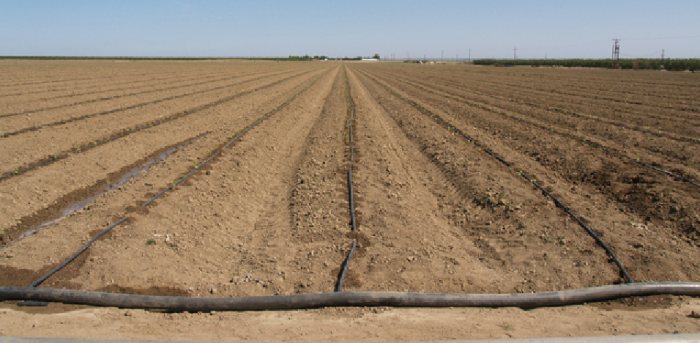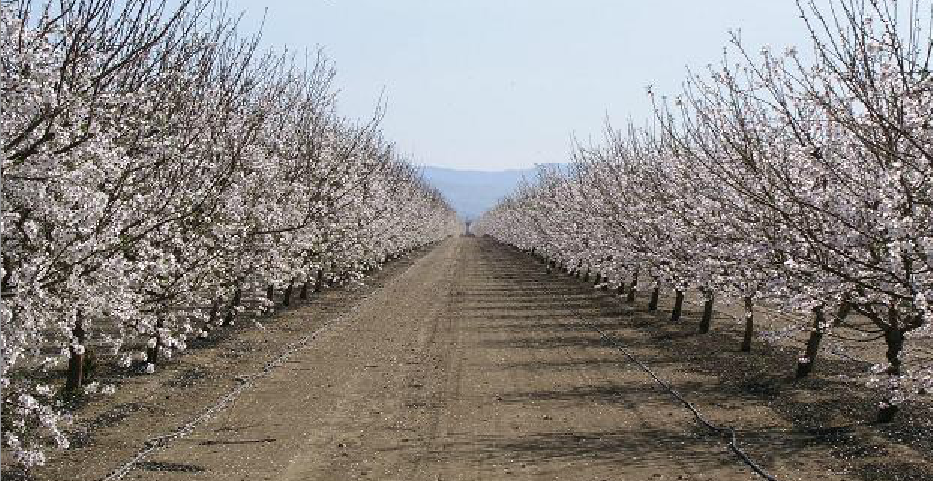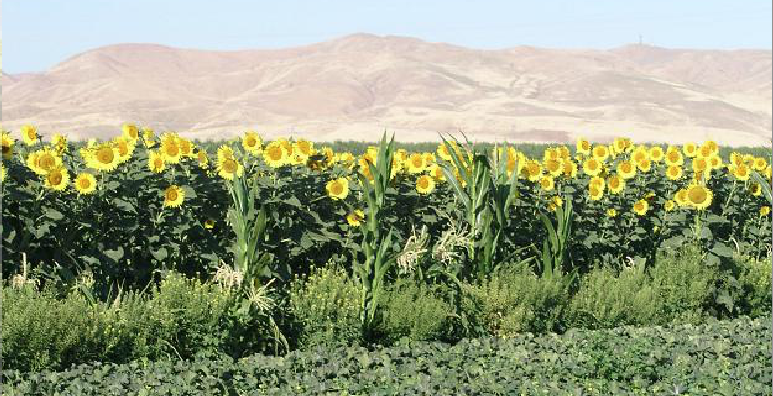Here is our crew harvesting asparagus in the spring. The spears can be seen in the foreground, appearing like sticks standing above the soil. They are very tender and fragile, and must be handled with a lot of care. Harvesting is hard work, stooping and cutting the spears. This is the only way that
Month: November 2013
Irrigation…

Micro irrigation have become extensively adopted in the San Joaquin Valley. It is highly efficient in terms of uniformity and metering. Many farmers utilize it for its water savings, but it has many benefits such as increased yields and labor savings. The most significant drawback is capital cost. Most crops can adapt to drip irrigation,
Spring Blossoms

It is spring in this picture and the almonds are blooming. These trees are about four years old. Each blossom can potentially produce a nut. Not visible are the millions of bees that are at work pollinating the flowers. Without this beneficial insect, we would not have many of our fruits and nuts. California is
Hedgerows

We plant hedgerows of sunflowers, corn, clover and other flowering plants between plantings of our organic melons. The hedgerow provides a habitat for beneficial insects that help control pests. The adults of many beneficial insects feed on nectar from flowers while their young, or larvae, are predaceous, feeding on pests such as aphids and caterpillars.
Harvesting…
Here is a crew harvesting cantaloupes. The workers in the foreground pick the ripe melons from the vines and place them on the packing table. Standing on the moving platform are people packing the melons in cardboard boxes. The boxes are sent by roller conveyor to a fatbed trailer where two people are stacking and